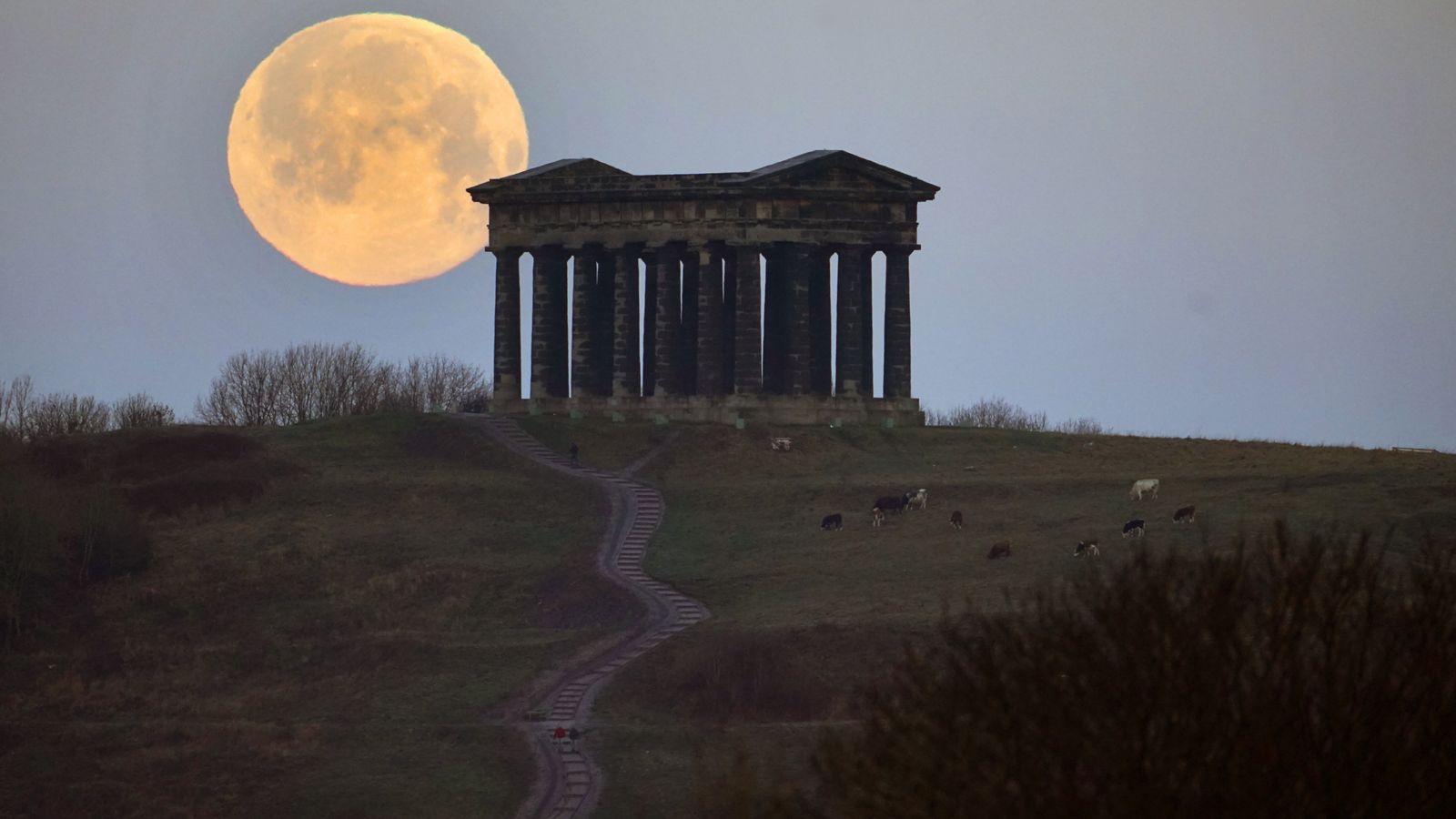As a 48-hour cold snap is expected to grip the whole of England, sky-gazers hope to catch a glimpse of a so-called snow moon over the next three days.
A weather warning was issued to start from 6pm on Sunday until 6pm on Tuesday, with all regions set to have cold nights and overnight frosts.
According to deputy chief forecaster at the Met Office, David Oliver, an area of high pressure will “dominate” the UK’s weather, with temperatures in the day returning to mid-single figures, normal for this time of year.
Experts from the UK Health Security Agency (UKHSA) and Met Office are also encouraging people to stay warm and look out for those most at risk from the effects of cold weather.
Check what the weather’s doing in your area
Despite chilly temperatures, sky-gazers are hoping for skies clear enough to be able to see the snow moon, which arrives each February, and will be visible from Sunday afternoon.
What is a snow moon?
According to NASA, the second full moon of the year, got its name – the snow moon – from tribes in North East America, who named it because of the heavy snow the season typically gets.
It was also referred to as the hunger moon due to the scarcity of food and hard hunting conditions of the month.
As well as the full moon this year, planets Mars, Jupiter and Venus will also be visible in the night sky.
When is the snow moon expected in the UK?
The snow moon will reach peak illumination at 6.28pm GMT (1.29pm EST) on Sunday, according to NASA. This means it will occur around two hours after the moon has risen.
It will appear full for three days, ending on Tuesday.
When the moon is at peak illumination, it will be at a distance of around 404,184.89km away from Earth, and at a magnitude of -12.53, according to the BBC.
With many keen to see the moon and visible planets, Dr Agostinho Sousa, a consultant in public health medicine, said it is “important to check in on family, friends and relatives who are more vulnerable to the cold weather”.
He recommended that individuals who have a pre-existing medical condition or are over the age of 65 to heat their homes to at least 18C.
If heating all rooms is not possible, the UKHSA recommends heating the living room during the day and the bedroom just before going to sleep.
Wearing several layers of thinner clothing will also keep people warmer than one thicker layer. Having plenty of hot food and drinks is also effective for keeping warm.












